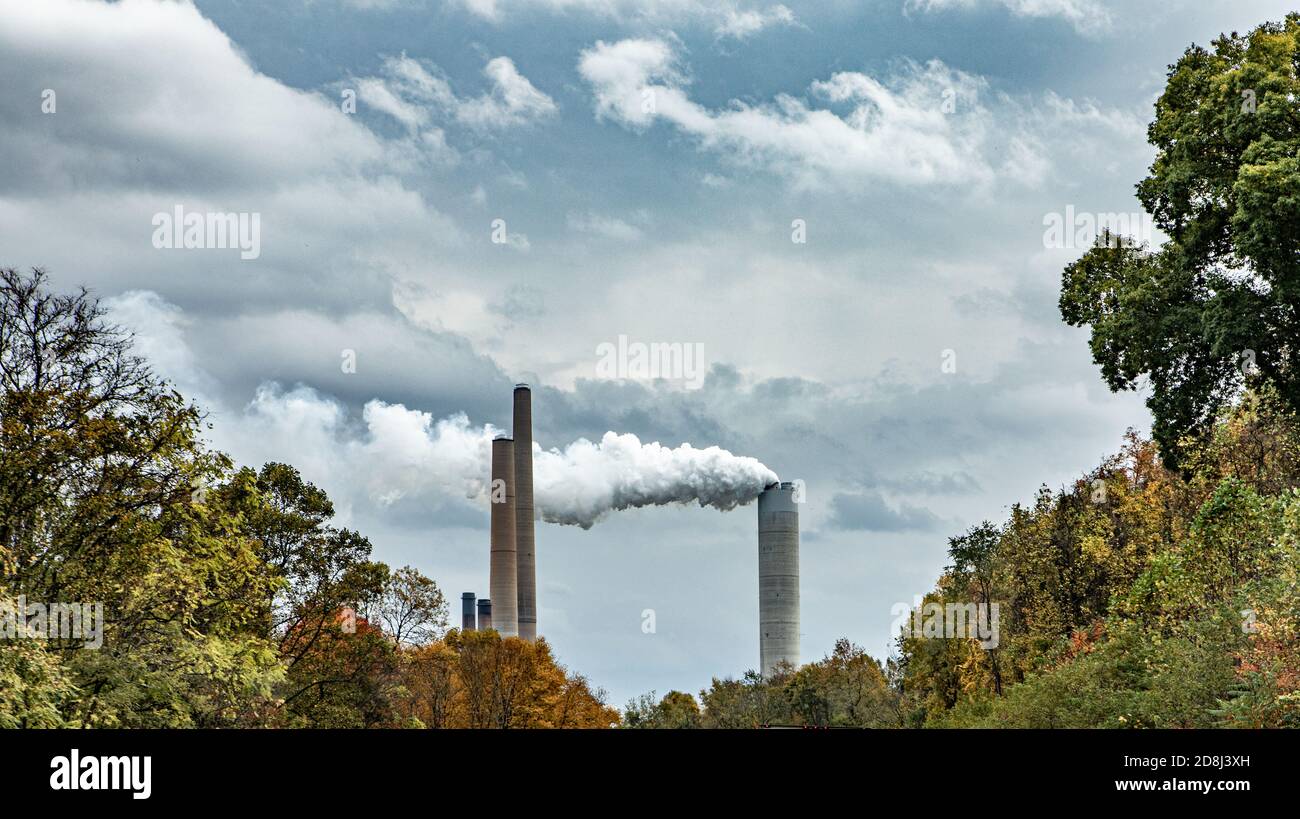
COLUMBUS, Ohio—After nearly six years, Ohio regulated utility customers will soon stop paying controversial subsidies for a handful of coal and solar power plants that were enacted via the scandal-ridden House Bill 6 energy law.
The Public Utilities Commission of Ohio on Wednesday, without discussion or dissent, voted to reduce both charges to zero as of Aug. 14. The vote was not in doubt, as Gov. Mike DeWine signed a sweeping energy reform bill in May that repealed both subsidies.
Over the past decade, Ohioans have paid upwards of $679 million on their power bills to subsidize two (generally) unprofitable 1950s-era coal power plants – the Kyger Creek plant in Clifton, Ohio and the Clifty Creek plant in Madison, Indiana.
Both plants are operated by the Ohio Valley Electric Corporation, or OVEC, which is owned by more than a dozen utility companies — including American Electric Power, Duke Energy, AES Ohio (formerly called Dayton Power & Light), and two subsidiaries of FirstEnergy Corp.
Exactly how much each Ohio regulated utility customer pays to subsidize the coal plants has varied month to month, depending on the wholesale energy market and other factors.
Ohio ratepayers have paid up to $1.50 per month to financially support the OVEC coal plants since 2016. Those payments were put into state law in 2019 via HB6, which was later found to have been passed with $60 million in bribes from FirstEnergy to land a $1 billion-plus nuclear plant bailout in the bill.
HB6 also created a subsidy for several older solar farms in Southeast and Western Ohio. While the state has subsequently collected $62 million in solar subsidies from ratepayers, only about $8.5 million of that had been spent as of February, for reasons ranging from issues with developers to bureaucratic red tape.
If left untouched, the OVEC subsidies would have continued until 2030, and the solar subsidies would have run through 2027.
Earlier this week, the Ohio Consumers’ Counsel and Ohio Manufacturers Association asked the PUCO to audit an estimated $237 million in OVEC charges in 2024 and 2025. Their request doesn’t allege any wrongdoing, but the filing stated that OVEC charges have been significantly higher the last two years and that an audit would ensure that customers are only paying for “prudently incurred costs.”
The PUCO’s order Wednesday zeroing out the OVEC and solar subsidies stated that a “final audit” will be conducted, without giving details about the scope of such an audit.
Critics say the OVEC-related subsidies were only added to HB6 by Republican state lawmakers in order to win support for the controversial legislation from powerful utilities in the state at a time when it wasn’t fully clear whether there were enough votes to pass the bill.
Some of the six solar projects that got subsidies under HB6 also had politically prominent supporters, including former Democratic National Committee chairman David Wilhelm and Matt Evans, president of Boich Companies, a politically active coal company.
Following the arrest of then-Ohio House Speaker Larry Householder and resignation of then-PUCO Chair Sam Randazzo – both of whom were ultimately charged with accepting millions in bribes from FirstEnergy — state lawmakers repealing the nuclear bailout and other major parts of HB6 back in 2021.
Democrats and some Republicans pushed for years to also repeal the OVEC subsidies, though HB6’s solar plant subsidies attracted far less attention.
Even now that the OVEC and solar subsidies are gone, a few parts of HB6 still remain on the books – the most significant of which guts Ohio’s green-energy standards for utilities.
Those standards, passed in 2008, required electric utilities to maintain ratepayer-funded energy-efficiency programs in order to cut energy consumption by 22% by 2025, as well as get 12.5% of their electricity from green-energy sources by 2027.
Republican critics of the mandates say repealing them has saved Ohioans money, while Democratic supporters of them argue they help the environment and would save ratepayers money in the long run.
©2025 Advance Local Media LLC. Visit cleveland.com. Distributed by Tribune Content Agency, LLC.






